Except I'd Never Look As Graceful He Is Majestic As Fuck
Except I'd never look as graceful he is majestic as fuck
*magnetos away from my responsibilities* like

More Posts from Risingstarling and Others
Hello! Would you mind doing an example of not using filter words in a first person point of view? While I know that you can just switch out the pronouns for I/me/my, I just want to see it in action and when you should (and shouldn't) use the filter words. Thank you!
Hi there! I would love to! I think I’ll start out with an example with filter words and then cut out the filter words to show you the difference.
For those of you who haven’t seen my post on Filter Words.
Now, for the example:
I felt a hand tap my shoulder as I realized I had made a huge mistake. I knew the consequences would be unsettling, but I had no other choice. I saw the light of my desk lamp bounce off of the officer’s badge before I had even turned around. It seemed like I always found my way into trouble.
It was the first thing off the top of my head, so it’s a bit rough sounding….
Now for without filter words (And a bit of revision):
A hand tapped my shoulder as it dawned on me: I had just made a huge mistake. The consequences would be unsettling if I didn’t get out of this mess, but I had no other choice. The light of my desk lamp bounced off of the officer’s badge. I always found my way into trouble.
By taking out filter words, you get right to the point.
I’d also like to add a few more notes that I didn’t have the chance to post previously.
Some Examples of Filtering:
I heard a noise in the hallway.
She felt embarrassed when she tripped.
I saw a light bouncing through the trees.
I tasted the sour tang of raspberries bursting on my tongue.
He smelled his teammate’s BO wafting through the locker room.
She remembered dancing at his wedding.
I think people should be kinder to one another.
How can you apply this?
Read your work to see how many of these filtering words you might be leaning on. Microsoft Word has a great Find and Highlight feature that I love to use when I’m editing. See how you can get rid of these filtering words and take your sentences to the next level by making stronger word choices. Take the above examples, and see how they can be reworked.
FILTERING EXAMPLE: I heard a noise in the hallway.
DESCRIBE THE SOUND: Heels tapped a staccato rhythm in the hallway.
FILTERING EXAMPLE: She felt embarrassed after she tripped.
DESCRIBE WHAT THE FEELING LOOKS LIKE: Her cheeks flushed and her shoulders hunched after she tripped.
FILTERING EXAMPLE: I saw a light bouncing through the trees.
DESCRIBE THE SIGHT: A light bounced through the trees.
FILTERING EXAMPLE: I tasted the sour tang of raspberries bursting on my tongue.
DESCRIBE THE TASTE: The sour tang of raspberries burst on my tongue.
FILTERING EXAMPLE: He smelled his teammate’s BO wafting through the locker room.
DESCRIBE THE SMELL: His teammate’s BO wafted through the locker room.
FILTERING EXAMPLE: She remembered dancing at his wedding.
DESCRIBE THE MEMORY: She had danced at his wedding.
FILTERING EXAMPLE: I think people should be kinder to one another.
DESCRIBE THE THOUGHT: People should be kinder to one another.
See what a difference it makes when you get rid of the filter? It’s simply not necessary to use them. By ditching them, you avoid “telling,” your voice is more active, and your pacing is helped along.
The above list is not comprehensive as there are many examples of filtering words. The idea is to be aware of the concept so that you can recognize instances of it happening in your work. Be aware of where you want to place the energy and power in your sentences. Let your observations flow through your characters with immediacy.
Ok, sorry for the lengthy answer, I know you just wanted an example…. sorry!
If you have any questions, feel free to ask at my ask box
“Pick your battles. Pick… pick fewer battles than that. Put some back. That’s too many.”
— Tsuna at Hibari
My best of winter 2017
Kuzu no honkai

Personally I was quite thrilled for this one since I was folowing the manga. The wait was worth it
Reasons to see it
Great story
Beatiful visuals and art
The ost is so onpoint like damn
The damn feels
I will give you a 5 cmx second vibe sometimes
GREAT CHARACHTER DEVOLPMENT
The human strugles about love are so real
The really hot nsfw scenes lol
Kobayashi-san Chi no Maid Dragon

Ok I was literally expecting nothing from this anime , moe appart ofc . And It actually turned to be one ot the most batiful slice of life/ comedy I’ve seen in a while
Reasons to see it:
Great charachters
I will make you laugh out loudly ad give you some hapiness
The osts and the gags
Some good lessons about life and stuggles
And the most important reason

Whatch it for this godess. Literally lol
Little Witch Academia

My dark horse of the season. I just love this anime and the vibe it gives so much. Expecially ako and her expressions. Precious child.
Reasons to whatch it:
One of the best female leads
The great sucy ( we all know she is best girl)
The simple but yet great animation
The comedy that alys hides some deep messagge behind it
Whatch it you want to fall in love with magic and innocence
Shouwa Genroku Rakugo Shinjuu: Sukeroku Futatabi-hen

The first season hooked me up. the second one made meworship and love it. Seriously what a magnificent anime
Reason to whatch it:
This is a little masterpiece, You don’t really need more than this lol
Great and unprecditable drama
Memorabe characters
Amazing animation
Best opening I’ve seen in a while. One of my all time favorite op
The feels are real and will et you alive
PLEASE DO YOURSELF A FAVOR AND GO WHATCH THIS
3-gatsu no Lion

This anime once again proved me that underrated anime are the best. This anime strugges are so real that it just breaks your heart. Once again umino chika (Hachimitsu to clover) lived up to her name
Reason to whatch it:
Rei. One of the best devolved protagonist I’ve seen
His problems are so deep and real you can’t help to cheer for him
Great side characters and charachter devolpment
Amazing art
Great balance betwen comedy/seriousness/sad scenes
Come for the charachters and stay for the feels
Gintama
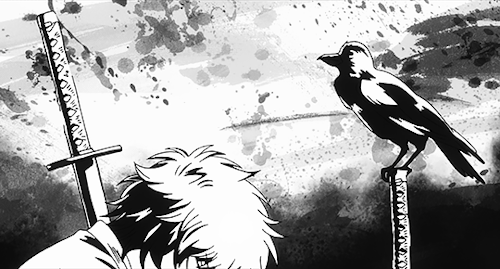
Hands down to one of the most beatiful shonen’s ever made. You don’t need the sad past from the 1 episode to pity the charachters . Afer 400 episodes is more epic
As the precedent arc Gintama was the anime that made me laugh and cry more than everything. The great balance between commedy and serious scenes is what makes gintama so special.
You don’t need reasons to go and whatch this. Just do it , you will thank me later. It’s probably better than any overated shonen anime like one piece ( yeah I said one piece) , Fairy tale, and even Naruto which I love with all my hear.
-My favorite part of the season was about zura’s bacstory and fight scene. I already loved him but the deepness sorachi added to him left me spechless.

Resources For Writing Sketchy Topics

Medicine
A Study In Physical Injury
Comas
Medical Facts And Tips For Your Writing Needs
Broken Bones
Burns
Unconsciousness & Head Trauma
Blood Loss
Stab Wounds
Pain & Shock
All About Mechanical Injuries (Injuries Caused By Violence)
Writing Specific Characters
Portraying a kleptomaniac.
Playing a character with cancer.
How to portray a power driven character.
Playing the manipulative character.
Portraying a character with borderline personality disorder.
Playing a character with Orthorexia Nervosa.
Writing a character who lost someone important.
Playing the bullies.
Portraying the drug dealer.
Playing a rebellious character.
How to portray a sociopath.
How to write characters with PTSD.
Playing characters with memory loss.
Playing a pyromaniac.
How to write a mute character.
How to write a character with an OCD.
How to play a stoner.
Playing a character with an eating disorder.
Portraying a character who is anti-social.
Portraying a character who is depressed.
How to portray someone with dyslexia.
How to portray a character with bipolar disorder.
Portraying a character with severe depression.
How to play a serial killer.
Writing insane characters.
Playing a character under the influence of marijuana.
Tips on writing a drug addict.
How to write a character with HPD.
Writing a character with Nymphomania.
Writing a character with schizophrenia.
Writing a character with Dissociative Identity Disorder.
Writing a character with depression.
Writing a character who suffers from night terrors.
Writing a character with paranoid personality disorder.
How to play a victim of rape.
How to play a mentally ill/insane character.
Writing a character who self-harms.
Writing a character who is high on amphetamines.
How to play the stalker.
How to portray a character high on cocaine.
Playing a character with ADHD.
How to play a sexual assault victim.
Writing a compulsive gambler.
Playing a character who is faking a disorder.
Playing a prisoner.
Portraying an emotionally detached character.
How to play a character with social anxiety.
Portraying a character who is high.
Portraying characters who have secrets.
Portraying a recovering alcoholic.
Portraying a sex addict.
How to play someone creepy.
Portraying sexually/emotionally abused characters.
Playing a character under the influence of drugs.
Playing a character who struggles with Bulimia.
Illegal Activity
Examining Mob Mentality
How Street Gangs Work
Domestic Abuse
Torture
Assault
Murder
Terrorism
Internet Fraud
Cyberwarfare
Computer Viruses
Corporate Crime
Political Corruption
Drug Trafficking
Human Trafficking
Sex Trafficking
Illegal Immigration
Contemporary Slavery
Black Market Prices & Profits
AK-47 prices on the black market
Bribes
Computer Hackers and Online Fraud
Contract Killing
Exotic Animals
Fake Diplomas
Fake ID Cards, Passports and Other Identity Documents
Human Smuggling Fees
Human Traffickers Prices
Kidney and Organ Trafficking Prices
Prostitution Prices
Cocaine Prices
Ecstasy Pills Prices
Heroin Prices
Marijuana Prices
Meth Prices
Earnings From Illegal Jobs
Countries In Order Of Largest To Smallest Risk
Forensics
arson
Asphyxia
Blood Analysis
Book Review
Cause & Manner of Death
Chemistry/Physics
Computers/Cell Phones/Electronics
Cool & Odd-Mostly Odd
Corpse Identification
Corpse Location
Crime and Science Radio
crime lab
Crime Scene
Cults and Religions
DNA
Document Examination
Fingerprints/Patterned Evidence
Firearms Analysis
Forensic Anthropology
Forensic Art
Forensic Dentistry
Forensic History
Forensic Psychiatry
General Forensics
Guest Blogger
High Tech Forensics
Interesting Cases
Interesting Places
Interviews
Medical History
Medical Issues
Misc
Multiple Murderers
On This Day
Poisons & Drugs
Police Procedure
Q&A
serial killers
Space Program
Stupid Criminals
Theft
Time of Death
Toxicology
Trauma
How to Write a Novel: Tips For Visual Thinkers.
1. Plotting is your friend.
This is basically a must for all writers (or at least, it makes our job significantly easier/less time consuming/less likely to make us want to rip our hair out by the roots), but visual thinkers tend to be great at plotting. There’s something about a visible outline that can be inexplicably pleasing to us, and there are so many great ways to go about it. Here are a few examples:
The Three-Act Structure
This one is one of the simplest: it’s divided into the tried-and-true three acts, or parts, a la William Shakespeare, and includes a basic synopsis of what happens in each. It’s simple, it’s familiar, it’s easy to add to, and it get’s the job done.
It starts with Act I – i.e. the set-up, or establishing the status quo – which is usually best if it’s the shortest act, as it tends to bore audiences quickly. This leads to Act II, typically the longest, which introduces the disruptor and shows how characters deal with it, and is sandwiched by Act III (the resolution.)
The Chapter-by-Chapter
This is the one I use the most. It allows you to elucidate on the goings on of your novel in greater detail than the quintessential three act synopsis generally could, fully mapping out your manuscript one chapter at a time. The descriptions can be as simple or as elaborate as you need them to be, and can be added to or edited throughout the progression of your novel.
Can easily be added to/combined with the three-act structure.
The Character Arc(s)
This isn’t one that I’ve used a lot, but it can be a lot of fun, particularly for voice-driven/literary works: instead on focusing on the events of the plot, this one centralizes predominantly around the arc of your main character/characters. As with its plot-driven predecessors, it can be in point-by-point/chapter-by-chapter format, and is a great way to map out character development.
The Tent Moments
By “tent moments,” I mean the moments that hold up the foundation (i.e. the plot) of the novel, in the way that poles and wires hold up a tent. This one builds off of the most prevalent moments of the novel – the one’s you’re righting the story around – and is great for writers that want to cut straight to the action. Write them out in bullet points, and plan the rest of the novel around them.
The Mind Map
This one’s a lot of fun, and as an artist, I should probably start to use it more. It allows you to plot out your novel the way you would a family tree, using doodles, illustrations, and symbols to your heart’s content. Here’s a link to how to create basic mind maps on YouTube.
2. “Show don’t tell” is probably your strong suit.
If you’re a visual thinker, your scenes are probably at least partially originally construed as movie scenes in your head. This can be a good thing, so long as you can harness a little of that mental cinematography and make your readers visualize the scenes the way you do.
A lot of published authors have a real big problem with giving laundry lists of character traits rather than allowing me to just see for myself. Maybe I’m spoiled by the admittedly copious amounts of fanfiction I indulge in, where the writer blissfully assumes that I know the characters already and let’s the personalities and visuals do the talking. Either way, the pervasive “telling” approach does get tedious.
Here’s a hypothetical example. Let’s say you wanted to describe a big, tough, scary guy, who your main character is afraid of. The “tell” approach might go something like this:
Tommy was walking along when he was approached by a big, tough, scary guy who looked sort of angry.
“Hey, kid,” said the guy. “Where are you going?”
“I’m going to a friend’s house,” Tommy replied.
I know, right? This is Boring with a capital ‘B.’
On the other hand, let’s check out the “show” approach:
The man lumbered towards Tommy, shaved head pink and glistening in the late afternoon sun. His beady eyes glinted predatorily beneath the thick, angry bushes of his brows.
“Hey, kid,” the man grunted, beefy arms folded over his pot belly. “Where are you going?”
“I’m going to a friend’s house,” Tommy replied, hoping the man didn’t know that he was ditching school.
See how much better that is? We don’t need to be told the man is big, tough, and scary looking because the narrative shows us, and draws the reader a lot more in the process.
This goes for scene building, too. For example:
Exhibit A:
Tyrone stepped out onto his balcony. It was a beautiful night.
Lame.
Exhibit B:
Tyrone stepped out onto his balcony, looking up at the inky abyss of the night sky, dotted with countless stars and illuminated by the buttery white glow of the full moon.
Much better.
3. But conversely, know when to tell.
A book without any atmosphere or vivid, transformative descriptors tends to be, by and large, a dry and boring hunk of paper. That said, know when you’re showing the reader a little too much.
Too many descriptors will make your book overflow with purple prose, and likely become a pretentious read that no one wants to bother with.
So when do you “tell” instead of “show?” Well, for starters, when you’re transitioning from one scene to the next.
For example:
As the second hand of the clock sluggishly ticked along, the sky ever-so-slowly transitioning from cerulean, to lilac, to peachy sunset. Finally, it became inky black, the moon rising above the horizon and stars appearing by the time Lakisha got home.
These kind of transitions should be generally pretty immemorable, so if yours look like this you may want to revise.
Day turned into evening by the time Lakisha got home.
See? It’s that simple.
Another example is redundant descriptions: if you show the fudge out of a character when he/she/they are first introduced and create an impression that sticks with the reader, you probably don’t have to do it again.
You can emphasize features that stand out about the character (i.e. Milo’s huge, owline eyes illuminated eerily in the dark) but the reader probably doesn’t need a laundry list of the character’s physical attributes every other sentence. Just call the character by name, and for God’s sake, stay away from epithets: the blond man. The taller woman. The angel. Just, no. If the reader is aware of the character’s name, just say it, or rework the sentence.
All that said, it is important to instill a good mental image of your characters right off the bat.
Which brings us to my next point…
4. Master the art of character descriptions.
Visual thinkers tend to have a difficult time with character descriptions, because most of the time, they tend to envision their characters as played their favorite actors, or as looking like characters from their favorite movies or TV shows.
That’s why you’ll occasionally see characters popping up who are described as looking like, say, Chris Evans.
It’s a personal pet peeve of mine, because A) what if the reader has never seen Chris Evans? Granted, they’d probably have to be living on Mars, but you get the picture: you don’t want your readers to have to Google the celebrity you’re thirsting after in order for them to envision your character. B) It’s just plain lazy, and C) virtually everyone will know that the reason you made this character look like Chris Evans is because you want to bang Chris Evans.
Not that that’s bad or anything, but is that really what you want to be remembered for?
Now, I’m not saying don’t envision your characters as famous attractive people – hell, that’s one of the paramount joys of being a writer. But so’s describing people! Describing characters is a lot of fun, draws in the reader, and really brings your character to life.
So what’s the solution? If you want your character to look like Chris Evans, describe Chris Evans.
Here’s an example of what I’m talking about:
Exhibit A:
The guy got out of the car to make sure Carlos was alright, and holy cow, he looked just like Dean Winchester!
No bueno. Besides the fact that I’m channeling the writing style of 50 Shades of Grey a little here, everyone who reads this is going to process that you’re basically writing Supernatural fanfiction. That, or they’ll have to Google who Dean Winchester is, which, again, is no good.
Exhibit B:
The guy got out of the car to make sure Carlos was alright, his short, caramel blond hair stirring in the chilly wind and a smattering of freckles across the bridge of his nose. His eyes were wide with concern, and as he approached, Carlos could see that they were gold-tinged, peridot green in the late afternoon sun.
Also note that I’m keeping the description a little vague here; I’m doing this for two reasons, the first of which being that, in general, you’re not going to want to describe your characters down to the last detail. Trust me. It’s boring, and your readers are much more likely to become enamored with a well-written personality than they are a vacant sex doll. Next, by keeping the description a little vague, I effectively manage to channel a Dean Winchester-esque character without literally writing about Dean Winchester.
Let’s try another example:
Exhibit A:
Charlotte’s boyfriend looked just like Idris Elba.
Exhibit B:
Charlotte’s boyfriend was a stunning man, eyes pensive pools of dark brown amber and a smile so perfect that it could make you think he was deliciously prejudiced in your favor. His skin was dark copper, textured black hair gray at the temples, and he filled out a suit like no other.
Okay, that one may have been because I just really wanted to describe Idris Elba, but you get the point: it’s more engaging for the reader to be able to imagine your character instead of mentally inserting some sexy fictional character or actor, however beloved they may be.
So don’t skimp on the descriptions!
5. Don’t be afraid to find inspiration in other media!
A lot of older people recommend ditching TV completely in order to improve creativity and become a better writer. Personally, if you’ll pardon my French, I think this is bombastic horseshit.
TV and cinema are artistic mediums the same way anything else is. Moreover, the sheer amount of fanart and fanfiction – some of which is legitimately better than most published content – is proof to me that you can derive inspiration from these mediums as much as anything else.
The trick is to watch media that inspires you. I’m not going to say “good media” because that, in and of itself, is subjective. I, for example, think Supernatural is a fucking masterpiece of intertextual postmodernism and amazing characterization, whereas someone else might think it’s a hot mess of campy special effects and rambling plotlines. Conversely, one of my best friends loves Twilight, both the movies and the books, which, I’m going to confess, I don’t get at all. But it doesn’t matter that it isn’t good to me so long as it’s good to her.
So watch what inspires you. Consume any whatever movies, books, and shows you’re enthusiastic about, figure out what you love most about them, and apply that to your writing. Chances are, readers will find your enthusiasm infectious.
As a disclaimer, this is not to say you get a free pass from reading: I’ve never met a good writer who didn’t read voraciously. If you’re concerned that you can’t fall in love with books the way you used to (which, sadly, is a common phenomenon) fear not: I grappled with that problem after I started college, and I’ll be posting an article shortly on how to fall back in love reading.
So in the meanwhile, be sure to follow my blog, and stay tuned for future content!
(This one goes out to my friend, beta reader, and fellow writer @megpieeee, who is a tremendous visual thinker and whose books will make amazing movies someday.)
Cersei : You only have two dragons now
Daenerys: Nope, still three


and…


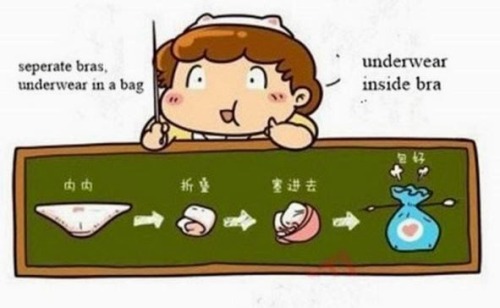
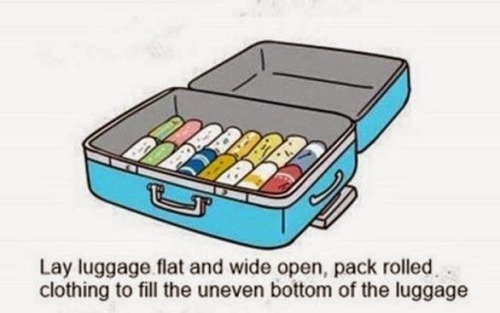
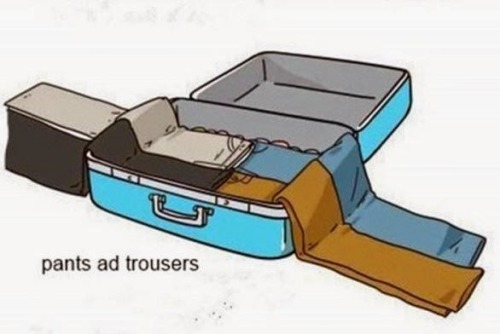
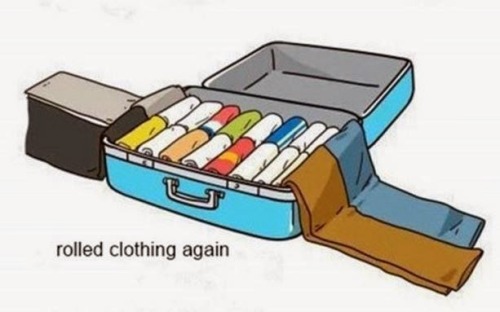
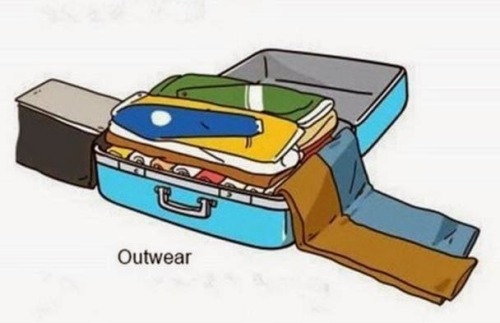
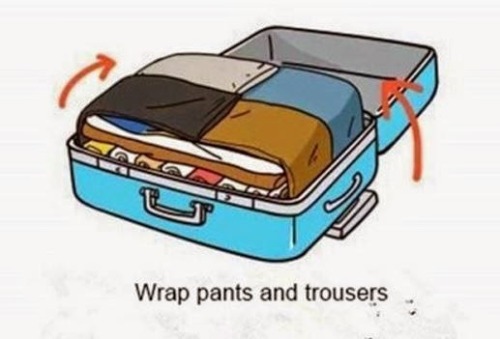
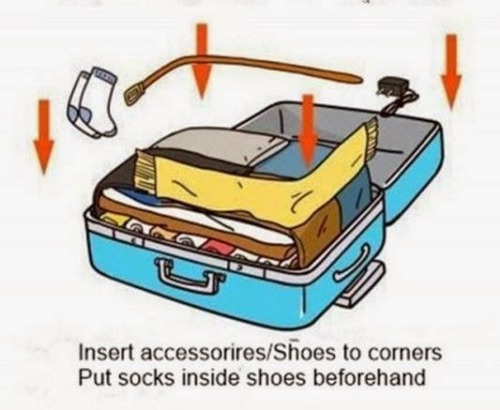

How to Pack Luggage?

A visual glossary of braid types
More Visual Glossaries (for Her): Backpacks / Bags / Beads / Bobby Pins / Boots / Bra Types / Belt knots / Chain Types / Coats / Collars / Darts / Dress Shapes / Dress Silhouettes / Eyeglass frames / Eyeliner Strokes / Hairstyles / Hangers / Harem Pants / Hats / Heels / Jackets & Coats / Lingerie / Nail shapes / Necklaces / Necklines / Pants / Patterns (Part1) / Patterns (Part 2) / Plaid / Pleats / Puffy Sleeves / Scarf Knots / Shoes I / Shoes II / Shorts / Silhouettes / Skirts / Skirt Silhouettes / Tartans / Tops / Underwear / Veil Lengths / Vintage Hats / Waistlines / Wedding Gown Silhouettes / Wool
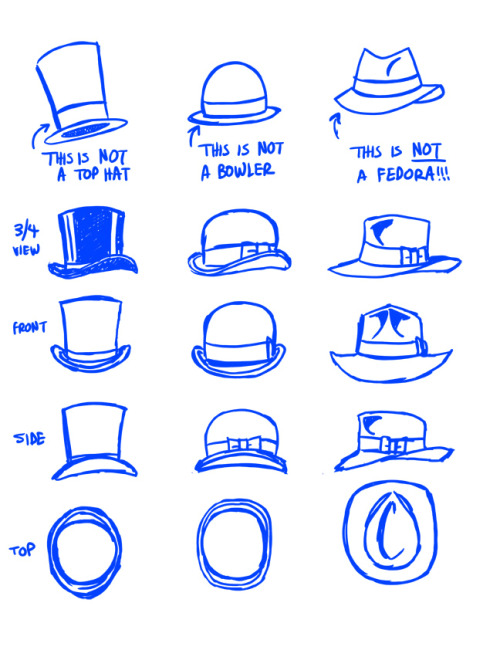
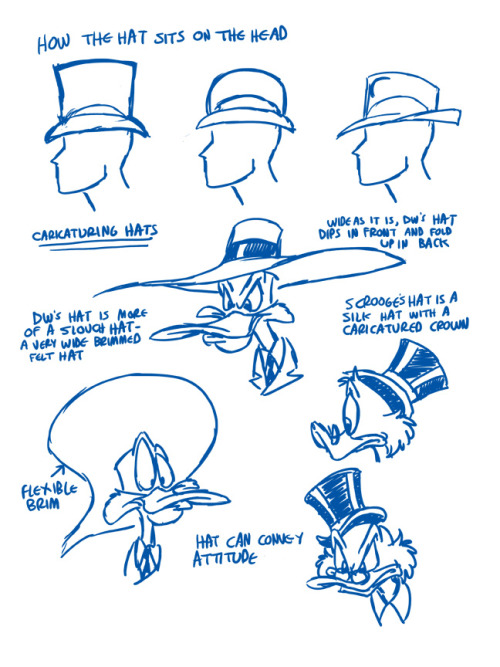
Quick and dirty hat drawing tutorial
One of my biggest pet peeves is the amount of artists (including many comics professionals) that do not draw hats properly. Since most of the characters I draw wear them I get a lot of practice. I thought I’d share the basics with you.
Basic Hat Structure- a hat is made up of a crown (the part that covers your head) and the brim (the part that shades your eyes). The crown should be bigger than the head you draw. Always draw the head shape first and work the hat around that. The brim of a hat is NEVER flat. Hats are meant to keep the head warm and the sun off of your eyes. The front of the brim will fold down to give the eyes as much shade as possible. A band or ribbon runs around the bottom of the crown with a faux bow on the left side, mostly for aesthetic purposes.
Top Hats- These are favored by rich ducks everywhere. A proper top hat is made of silk. A lot of top hat-styled hats that are made of wool or felt are more of a coachman’s hat. Fine for cosplay but rather gauche when you’re drawing the Penguin. The traditional top hat will not have a large band and will have a ribbon around the brim. Some top hats have a crown that will collapse flat.
Bowler Hat or Derby- A short brimmed hat. A ribbon also covers the brim. The crown is rounded and made of hard material.
The Fedora- Not the short brimmed, straw trilbys you see hipsters wearing on the back of their heads. A traditional fedora is made of fur felt and has a large crown with a pinch in the front. A larger brim dips in front and traditionally is worn up in back.
Next lesson- we learn about the Homburg!
3 Study Methods You Should Use More Often
This was originally for an article writing assignment, but I thought “why not write something I can also post on my blog?” so here are three study methods that I haven’t seen a lot of in the studyblr community but are definitely worth mentioning.
The Leitner System
Flash cards have remained one of the most popular ways to study. Some people use them to memorize vocabulary, remember answers to specific questions, or even associate dates with events. Although the use of flash cards is convenient, their effectiveness has been reduced due to most people’s habits of prioritizing each card equally and therefore spending too much time memorizing the information on them.
The Leitner System, created by a German popularizer of science named Sebastian Leitner, is a more efficient method of studying that implements the concept of spaced repetition. All the cards start off in one pile. You would first scan through these cards, then test yourself. Each card you answer correctly goes to a second pile, while those you answer incorrectly should be revised then placed at the bottom of the pile. When you review the cards in the second pile and get them correct, they will be promoted to a third pile. An incorrect card will always get demoted to the first pile, even if they had previously been promoted to the last pile.
The reason why this method is so effective is that you end up reviewing the first pile of cards more frequently—the cards you don’t know very well. Some people choose to review their Stack 1 cards every day, Stack 2 cards every other day, Stack 3 cards once every three days, and so on.
Once all your cards have been promoted to the highest box, study them thoroughly and then start over. The continuous revision trains your speed so that you may reach fluency, which allows you to recall the information faster.

Timed Memorization
The name tells it all: you memorize a certain text within a time limit, normally around five to ten minutes depending on your fluency and memorization abilities. When the timer starts, you begin memorizing. When time is up, you flip to the next page, even if you haven’t finished the previous page yet. Continue until you’ve gone through all your material.
Timed memorization helps you to discipline yourself because your brain thinks that there’s no time for messing around; you have to do this here and now. Make sure to repeat the things you missed and revise everything frequently. This method is actually one of the most effective for cramming as it gives a better coverage than if you spend a whole half hour memorizing one subtopic.
The Memory Palace or Mind Palace
Sound familiar? In BBC’s Sherlock, the ‘highly functioning sociopath’ uses this method to remember vital information and facts. A mind palace is a systematic arrangement of information, each detail corresponding to a specific object in a familiar place. To ensure that you really remember everything, the objects have to appear shocking and conspicuous.
Here’s an example: if I wanted to memorize “crimson, 11, delight, petrichor (the smell after rain)”, aside from imagining Amy Pond or the Doctor saying it, I would first choose a place, let’s say my school. I’d imagine myself walking up to the front gate and seeing that the entire building has been painted the color of blood—crimson. The building would then rise as though it were lifted from the earth and crumble into rubble, controlled by Eleven, the character from Stranger Things. Now, since I can’t really picture delight specifically, I’d probably end up visualizing a colossal sign that simply reads “delight” posted in front of my school. As for petrichor, I’d imagine curves rising out of the puddles on the asphalt after a rainy night, a visual representation of the smell of the rain. Of course, these visualizations have been created to suit my memory. (I wouldn’t know if you watched Stranger Things.)
I used this method when memorizing case studies for geography, although I chose to visualize fictional places from television series and cartoons. Some people do opt to create artificial places, but these often become blurry and are easily forgotten.
As with any study method, repetition is vital to storing the information in your long-term memory. Visit your “palace” as often as you can. Soon enough, you’ll remember the data as well as you remember the place associated with the data.
So there you have it, three lesser known methods of studying that have proven to be immensely efficient. Now, there is no “correct” way to study, but there are methods that can ease your learning process.
-
 waddlestowaddles reblogged this · 3 weeks ago
waddlestowaddles reblogged this · 3 weeks ago -
 waddlestowaddles liked this · 3 weeks ago
waddlestowaddles liked this · 3 weeks ago -
 too-cool-for-facebook reblogged this · 2 months ago
too-cool-for-facebook reblogged this · 2 months ago -
 too-cool-for-facebook liked this · 2 months ago
too-cool-for-facebook liked this · 2 months ago -
 gamelpar reblogged this · 3 months ago
gamelpar reblogged this · 3 months ago -
 anthea-the-maia liked this · 7 months ago
anthea-the-maia liked this · 7 months ago -
 thedrawbacksofbeingmortal reblogged this · 8 months ago
thedrawbacksofbeingmortal reblogged this · 8 months ago -
 thedrawbacksofbeingmortal liked this · 8 months ago
thedrawbacksofbeingmortal liked this · 8 months ago -
 flastar13 liked this · 8 months ago
flastar13 liked this · 8 months ago -
 ahkylous liked this · 8 months ago
ahkylous liked this · 8 months ago -
 qualitydestinyfest liked this · 9 months ago
qualitydestinyfest liked this · 9 months ago -
 dinningplatypus liked this · 10 months ago
dinningplatypus liked this · 10 months ago -
 captainscifi22 reblogged this · 10 months ago
captainscifi22 reblogged this · 10 months ago -
 ladytrsharon liked this · 1 year ago
ladytrsharon liked this · 1 year ago -
 shaybeforesunsets liked this · 1 year ago
shaybeforesunsets liked this · 1 year ago -
 wintershield-always reblogged this · 1 year ago
wintershield-always reblogged this · 1 year ago -
 abbydidnothingwrong liked this · 1 year ago
abbydidnothingwrong liked this · 1 year ago -
 dizzydreamerzzz liked this · 1 year ago
dizzydreamerzzz liked this · 1 year ago -
 fluffelhighwind liked this · 1 year ago
fluffelhighwind liked this · 1 year ago -
 milcs liked this · 1 year ago
milcs liked this · 1 year ago -
 sizzlingjudgebanditpaper liked this · 1 year ago
sizzlingjudgebanditpaper liked this · 1 year ago -
 kaesuo liked this · 1 year ago
kaesuo liked this · 1 year ago -
 garliccave liked this · 1 year ago
garliccave liked this · 1 year ago -
 thenopantsdance reblogged this · 1 year ago
thenopantsdance reblogged this · 1 year ago -
 tmblr-culture reblogged this · 1 year ago
tmblr-culture reblogged this · 1 year ago -
 wintershield-always reblogged this · 1 year ago
wintershield-always reblogged this · 1 year ago -
 nightwaving liked this · 2 years ago
nightwaving liked this · 2 years ago -
 groovy-lady reblogged this · 2 years ago
groovy-lady reblogged this · 2 years ago -
 groovy-lady liked this · 2 years ago
groovy-lady liked this · 2 years ago -
 mythosmaiden liked this · 2 years ago
mythosmaiden liked this · 2 years ago -
 user99istaken liked this · 2 years ago
user99istaken liked this · 2 years ago -
 scarsnake liked this · 2 years ago
scarsnake liked this · 2 years ago -
 deanshotgirlsummer reblogged this · 2 years ago
deanshotgirlsummer reblogged this · 2 years ago -
 marvinhere reblogged this · 2 years ago
marvinhere reblogged this · 2 years ago -
 kibo-ichiro liked this · 2 years ago
kibo-ichiro liked this · 2 years ago -
 minty-0ne liked this · 2 years ago
minty-0ne liked this · 2 years ago -
 blackbirds-on-the-marsh reblogged this · 2 years ago
blackbirds-on-the-marsh reblogged this · 2 years ago -
 steamdragonsoul reblogged this · 2 years ago
steamdragonsoul reblogged this · 2 years ago -
 snailswithwings liked this · 2 years ago
snailswithwings liked this · 2 years ago -
 spacedoutblogger liked this · 2 years ago
spacedoutblogger liked this · 2 years ago -
 the-party-bus liked this · 3 years ago
the-party-bus liked this · 3 years ago -
 englishbunnyrocks liked this · 3 years ago
englishbunnyrocks liked this · 3 years ago
Right now this is just anything that comes to mind since I'm a complete noob at tumblr. I've been hearing about it for years but I never really felt like I had anything to say. Well all that has changed now and I figured I'd see what all the hype about tumlr is really about. Anyway don't take anything I say too seriously for now...I'll probably change it later when I become more comfortable with this website.
168 posts